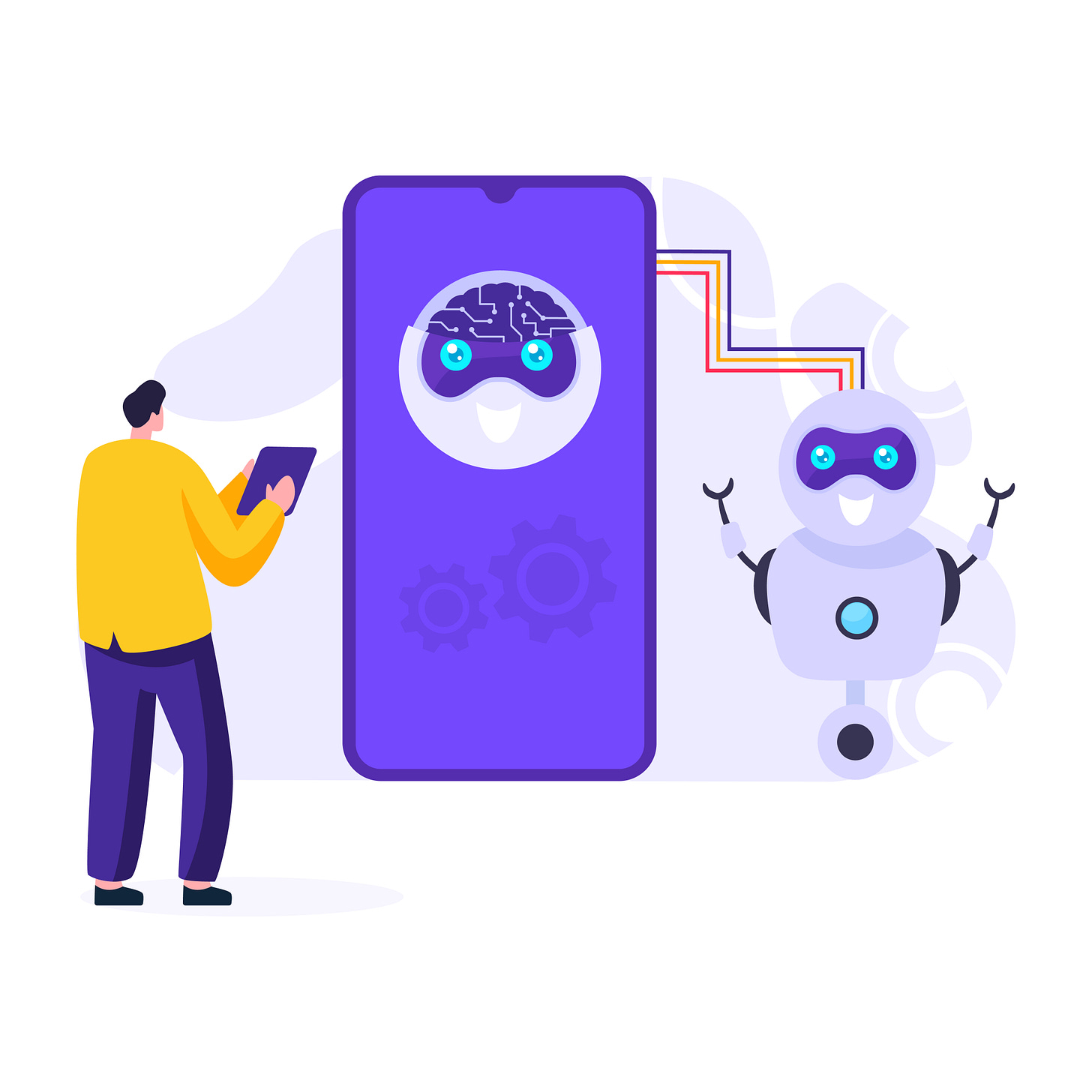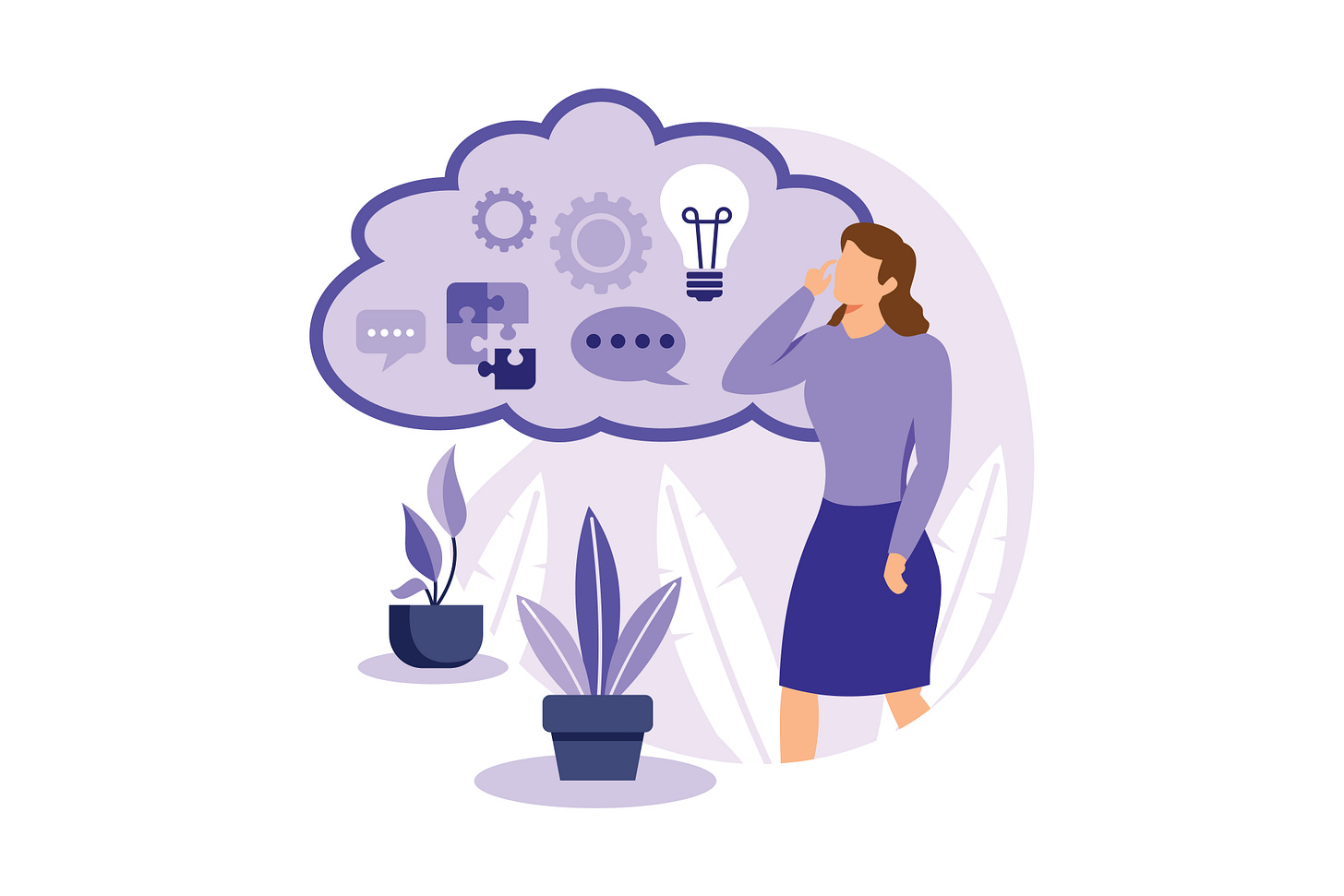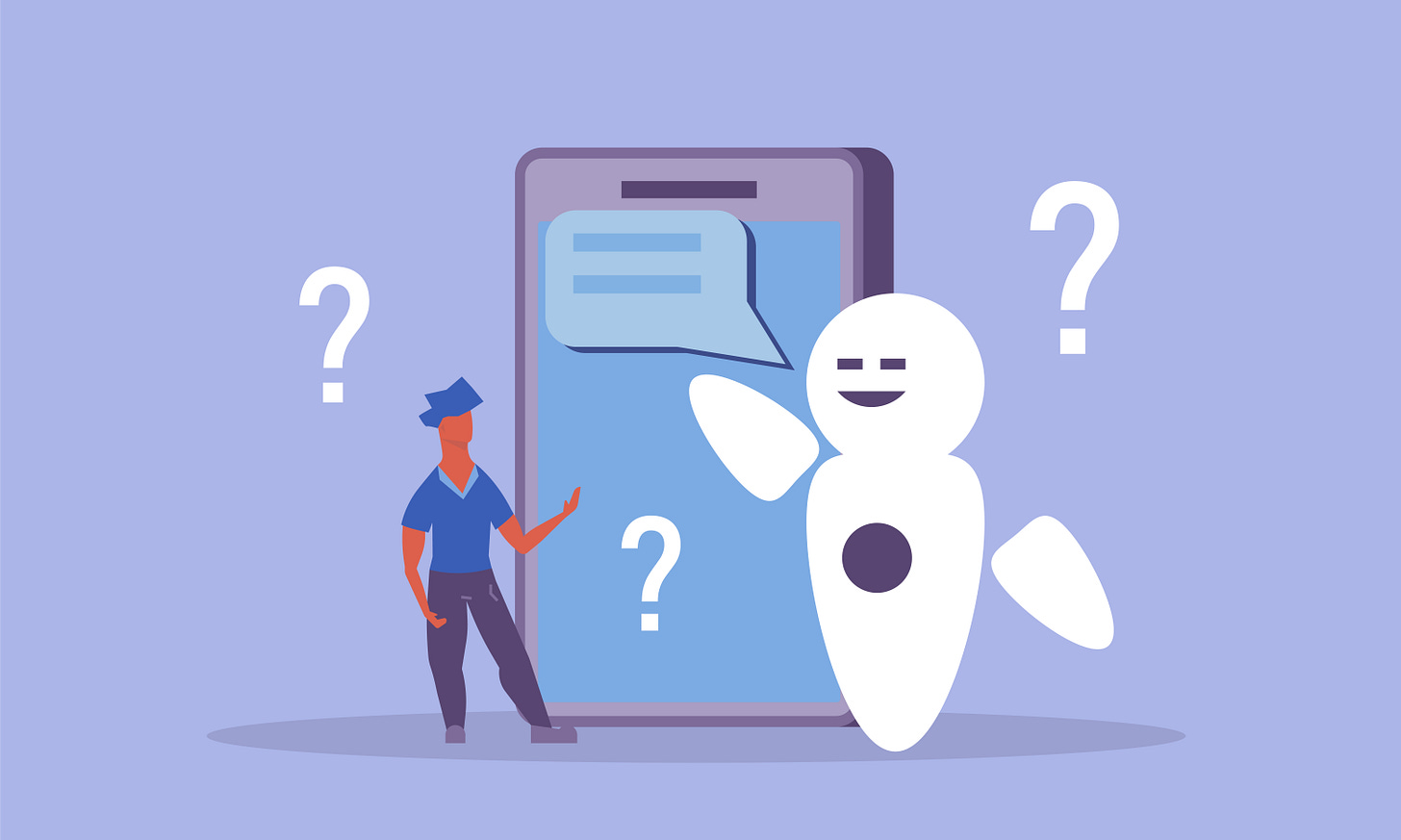AI as Your Life Coach: Prompts and Strategies to Reflect, Grow, and Get Unstuck
Discover practical ways to use ChatGPT and other AI tools for self-reflection, personal growth, and better decision making—no tech expertise required.
About a decade ago, I was trying to get my first business off the ground. I didn’t have a mentor I really clicked with, so I did what many of us do—I cobbled together advice from books, podcasts, YouTube interviews, and blog posts. Some of it helped. Some didn’t. And much of it didn’t fit my niche.
Looking back, I would’ve loved to have someone—a strategist, a guide, or even just a thoughtful sounding board—to help me think things through. Not someone with all the answers, but someone to help me sort it out.
These days, that kind of support is still out there, but it often comes wrapped in a $5,000 coaching program, a corporate retreat, or a “find-your-clarity” weekend in the woods. If that’s not quite in your budget—or your vibe—you’re not alone.
Here’s the good news: AI can actually fill some of that gap.
It’s not going to magically replace human wisdom or experience—but it can help you reflect more deeply, clarify your thinking, and organize your decisions in surprisingly helpful ways. Think of it as a thoughtful companion who asks good questions and helps you see around your mental corners.
In this article, I’ll show you three powerful ways you can use AI as a personal strategist—plus real-world prompts to get you started. Whether you're navigating a tough decision or just trying to get unstuck, this might be the missing tool in your mental toolbox. Let’s look at how this actually works—starting with the simplest (and surprisingly powerful) use case: self-reflection.
AI as a Mirror for Self-Reflection
Ever try to solve a problem while your brain feels fogged up? It’s like staring at a bathroom mirror after a hot shower—something important’s there, but everything’s too steamed up to see clearly.
This is where AI can actually come in handy. The best strategists don’t hand you answers—they help you see yourself more clearly. And in a very non-magical, entirely practical way, AI can do that too.
Large language models like ChatGPT are great at asking questions, noticing patterns, and nudging you toward clarity. You might spin your wheels on the same problem for weeks—then a well-phrased prompt pulls the thread that finally unravels the knot.
Try this prompt:
“I feel stuck in [X area of my life]. Ask me five questions that will help me clarify what’s really holding me back.”
It’s simple, but it works. The AI responds with questions that force you to slow down, reflect, and sometimes face things you’ve been skimming past. It’s not always comfortable—but it’s often what you need.
Here’s why this matters: We don’t always need someone to give us advice. Sometimes we just need the right questions in the right order. That’s where AI can step in—not as a guru, but as a surprisingly decent conversation partner when you’re trying to sort through the noise.
AI as a Synthesizer of Expert Knowledge
One of the hardest parts of personal growth isn’t finding advice—it’s figuring out which actually fits you. There’s no shortage of insights out there. The trick is turning all that advice into something usable—without getting lost in a sea of TED Talks and productivity books.
That’s where AI can play a different kind of role—not as a teacher, but as a translator. Large language models can help you sift through expert wisdom and personalize it to your own life.
Let’s say there’s someone you admire—maybe Simon Sinek or John Maxwell. Grab a long-form interview from YouTube, run a quick transcript (via YouTube’s auto-captions or a transcript app), and feed it into ChatGPT or NotebookLM to analyze.
Instead of just watching and nodding along, you can actually have a conversation with their ideas—and apply them to your life. AI can help you extract core themes, highlight key values, and even generate a plan tailored to your goals.
Here’s how to do it:
Find a long-form video, podcast, or book excerpt from someone you admire.
Use AI to pull out their core philosophy—what they value, how they handle challenges, and what strategies they lean on.
Turn those insights into a custom plan using persona prompting, where AI takes on the role of a coach shaped by that expert’s outlook.
Prompt examples:
“Summarize the core life philosophy of Simon Sinek from this video. Then apply it to my situation: I’m struggling with motivation in a new role. What strategies would he likely suggest?”
“Based on this John Maxwell talk, act like a leadership coach who follows his philosophy. Help me create a 30-day plan to build stronger daily habits.”
This method transforms AI into more than just a summarizer—it becomes a strategic partner that helps you bridge the gap between inspiration and implementation.
Credit where it’s due: this approach was inspired by a brilliant post from Allie K. Miller on LinkedIn. She broke down this method of using AI to turn thought leader content into personal strategy. It’s one of those insights that instantly clicks—and now it’s yours to play with.
AI to Jumpstart Breakthrough Thinking
Sometimes the problem isn’t a lack of answers—it’s that we’re stuck asking the same questions on repeat. Our brains love familiar patterns. They keep us safe—but they also keep us circling the same mental ruts.
AI can help shake that up. Not by giving you The One Right Answer™, but by challenging your assumptions, flipping your perspective, and helping you think in ways you wouldn’t naturally go on your own.
It’s like brainstorming with someone who has no ego and infinite patience—and isn’t afraid to call you out (gently).
Here are three ways to use AI to break out of your usual thought loops:
Reframe the Problem
Sometimes you’re not stuck because there’s no solution—you’re stuck because you’re solving the wrong version of the problem.
Prompt:
“I’ve been thinking about [situation] in one way. Challenge my assumptions—what alternative explanations or perspectives am I missing?”
This can uncover new angles you hadn’t considered—or help you realize you’ve been treating a surface symptom as the root issue.
Challenge Your Self-Perception
If you’ve ever taken a personality assessment—Myers-Briggs, Enneagram, StrengthsFinder—you know they can offer insights… but they can also turn into boxes we put ourselves in.
Try anonymizing your results (or summarizing them) and asking the AI to look for blind spots.
Prompts:
“Based on this personality summary, what are some areas where I might be overestimating myself?”
“What are three ways I might be misjudging myself based on these traits?”
This isn’t about beating yourself up—it’s about gently shaking the frame to see what else might fall into view.
Argue With Yourself (Productively)
You can even invite the AI to argue with you—not to pick a fight, but to reveal hidden biases or challenge lazy thinking.
Prompt:
“Here’s how I describe myself: [brief description]. Now, act as an insightful mentor and argue that I’m misjudging myself in at least three ways. What evidence would support that?”
This kind of creative tension can spark surprising breakthroughs—not because the AI is “right,” but because it nudges you to think in new ways.
Why This Works
Most of us (understandably) seek confirmation. We want to feel like we’re on the right track. But real growth often comes from friction—not just agreement.
By flipping the interaction and asking the AI to challenge you, you move it from being a helpful assistant to a thoughtful provocateur. And that shift—from passive support to active tension—can be exactly what’s needed to get unstuck.
AI as an Insightful Partner—Not a Decision Maker
By now, it’s probably clear: AI can do a lot to support your thinking. But as helpful as it is, it’s not a therapist, a mentor, or a mind-reader—and it shouldn’t be treated like one.
That’s why it’s important to see AI as a partner in your growth - not the one driving. A thoughtful assistant? Absolutely. A substitute for your judgment? Not so much.
Here are a few tips for using AI responsibly when it comes to self-improvement:
Treat AI like a Thought Partner, Not a Guru
AI can help you explore ideas, test your thinking, or sketch out next steps—but it’s still just a pattern predictor. It doesn’t know you. You do.
Prompt:
“You just gave me a strategy for [X]. Now, play devil’s advocate—what are the risks of following this advice?”
This helps you stress-test the ideas without giving up the driver’s seat.
Watch for Overconfidence and Hallucinations
Sometimes AI sounds totally convincing… and totally wrong. Confidence isn’t the same as correctness.
Prompt:
“Before I consider following this advice, what potential flaws or blind spots might be in this response?”
If it’s too certain, make it second-guess itself. That’s where the gold often is.
Compare Responses Across Different Models
Running the same prompt through different tools (like ChatGPT, Claude, Gemini, or Llama) can reveal different angles—and different blind spots.
You don’t need to be a tech expert to do this. Just copy and paste. You’ll often spot nuance or inconsistencies you wouldn’t catch using one model alone.
Use AI to Critique AI
It’s like getting a second opinion—minus the scheduling hassle.
Prompt:
“Here’s what another AI told me about [X]. Can you analyze it for weak logic, missing perspectives, or assumptions I should be cautious about?”
It’s like asking one assistant to fact-check the other. (Don’t worry—they won’t take it personally. Promise.)
And Most Importantly: Own Your Decisions
At the end of the day, AI can help you think, reflect, explore, and strategize. But it’s your life. Your values. Your choices.
No prompt can replace your lived experience—or your intuition. AI can add clarity, but judgment still belongs to you.
AI as a Thinking Partner, Not a Replacement for Judgment
There’s something powerful about having someone—or something—that helps you think more clearly. AI isn’t going to live your life for you, but it can help you pause, reflect, reframe, and plan more effectively.
Used well, it becomes a kind of thought partner: not the hero of your story, but a surprisingly capable co-writer.
Whether you’re facing a tough decision, chasing a goal, or just trying to untangle a mental mess, don’t underestimate what a smart prompt and a curious mindset can unlock.
Just remember: the smartest strategist in your life isn’t AI—it’s you, using AI wisely.
Curious to try some of these prompts yourself? I’d love to hear how it goes—drop a comment or pass it along to someone else who might find it useful.




